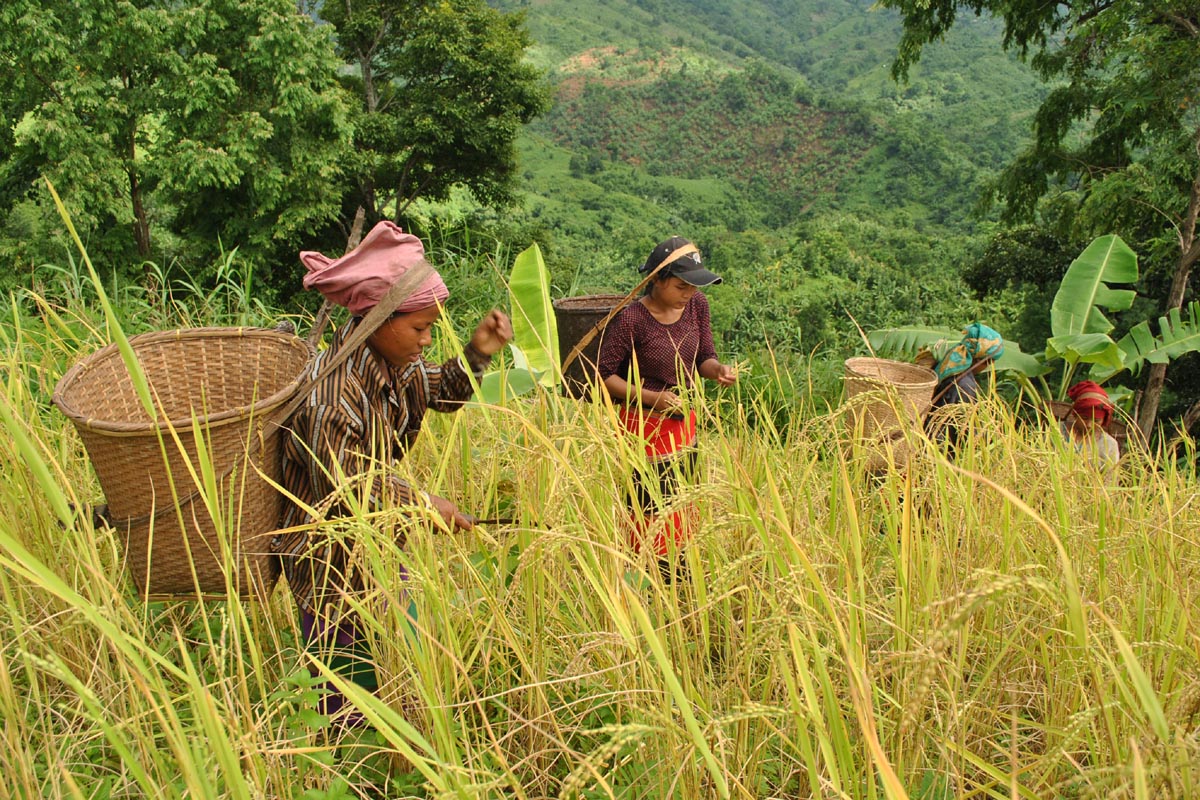News Flash

KHAGRACHHARI, Sept 27, 2025(BSS)- Hilli communities in Khagrachhari are
celebrating a bumper harvest of jhum (shifting cultivation) rice this year.
Favorable rainfall and ideal weather conditions have contributed to high
yields and families are already harvesting golden rice paddies across the
hills.
According to the Department of Agricultural Extension (DAE), nearly 1,050
hectares of land in the district were cultivated through jhum by around 5,000
families during the 2024-25 fiscal year, an increase of 26 hectares compared
to last year.
Last year, rice production reached 1,540 metric tons while the target has
been set at 1,548 metric tons this year.
Md. Abdullah Al Malek, scientific officer at the Khagrachhari Hill
Agriculture Research Institute, said modern jhum techniques are improving
yields. With controlled use of fertilizers, farmers can now cultivate the
same plot year after year. Researchers are emphasizing eco-friendly modern
jhum practices to further boost productivity.
In addition to rice, farmers are growing a variety of crops, including sweet
pumpkin, bitter pumpkin, bottle gourd, ridge gourd, cucumber, bitter gourd,
eggplant, banana, corn, ginger, turmeric, chili, sesame, and other spices.
High demand for these crops in local markets has allowed jhum farmers to
fetch better prices. For example, cucumber is currently selling for Taka 25-
30 per kilogram, higher than last year.
Farmers in the remote Naraichhari area of Babuchhara Union under Dighinala
upazila said poor road connectivity prevents them from getting fair prices
while the yields are good. Nevertheless, the successful harvest has brought
joy to their families.
Anantahin Chakma, headmaster of a local school, noted that this year's yields
of Gelong, Badey, and Rengui rice varieties have been particularly high.
Jhum farmers of Khagrachhari town Khagendra Tripura and Hari said, "From the
very beginning, the weather was favorable. During Chaitra and Boishakh
months, jhum bushes were dried under intense sunlight to clear the land. In
Jaishtha and Ashar months, there was enough rainfall for rice and other
seedlings to grow. Although there was a risk of landslides, major soil damage
was avoided, allowing us to save our crops. That's why this year's jhum
harvest has been excellent."
Harvesting has already begun along Alutila and Dighinala roads. The
Bangladesh Rice Research Institute has also planted new rice varieties,
including BRRI-24, BRRI-26, and BRRI-27, on a trial basis in jhum fields.
Md. Bashirul Alam, Deputy Director of the DAE, said BRRI-24 and BRRI-27
performed best in demonstration plots and that jhum farmers would be included
in government incentive programs in the future.
Local leaders noted for generations, indigenous communities have relied on
jhum cultivation for their livelihoods. They explained that traditional jhum
practices begin with selecting either owned or abandoned hill land and
clearing dense forest.
"Between Falgun and Chaitra months, the cleared land is dried under the sun
and then burned to enrich the soil with ash. With the first rains of
Boishakh, rice seeds are sown, followed by various vegetables and medicinal
crops. Throughout the cultivation period, family members work together from
morning to evening, taking midday rest in temporary jhum huts built on the
slopes," they added.
Despite some negative perceptions about jhum cultivation, indigenous
communities across the hill region-representing nearly 14 different
linguistic groups-have relied on this practice for generations as a primary
source of livelihood. Crops produced through jhum are also known to be both
nutritious and flavorful.
According to a 1988 article by Gautam Kumar Chakma, central leader of the
Chittagong Hill Tracts Jana Sanghati Samiti and member of the Regional
Council, nearly 100,000 families in the Chittagong Hill Tracts practice jhum
farming.
Among the five major ethnic groups in the region, 84.04 percent of the
Murung, 54.08 percent of the Tripura, 42.3 percent of the Marma, 22.07percent
of the Chakma and 1.06 percent of the Bengali populations engage in jhum
cultivation, according to 2001 survey conducted by the NGO BRAC.
Among these groups, the Chakma call it "jhum," the Tripura term it "chug,"
and the Marma refer to it as "ya".